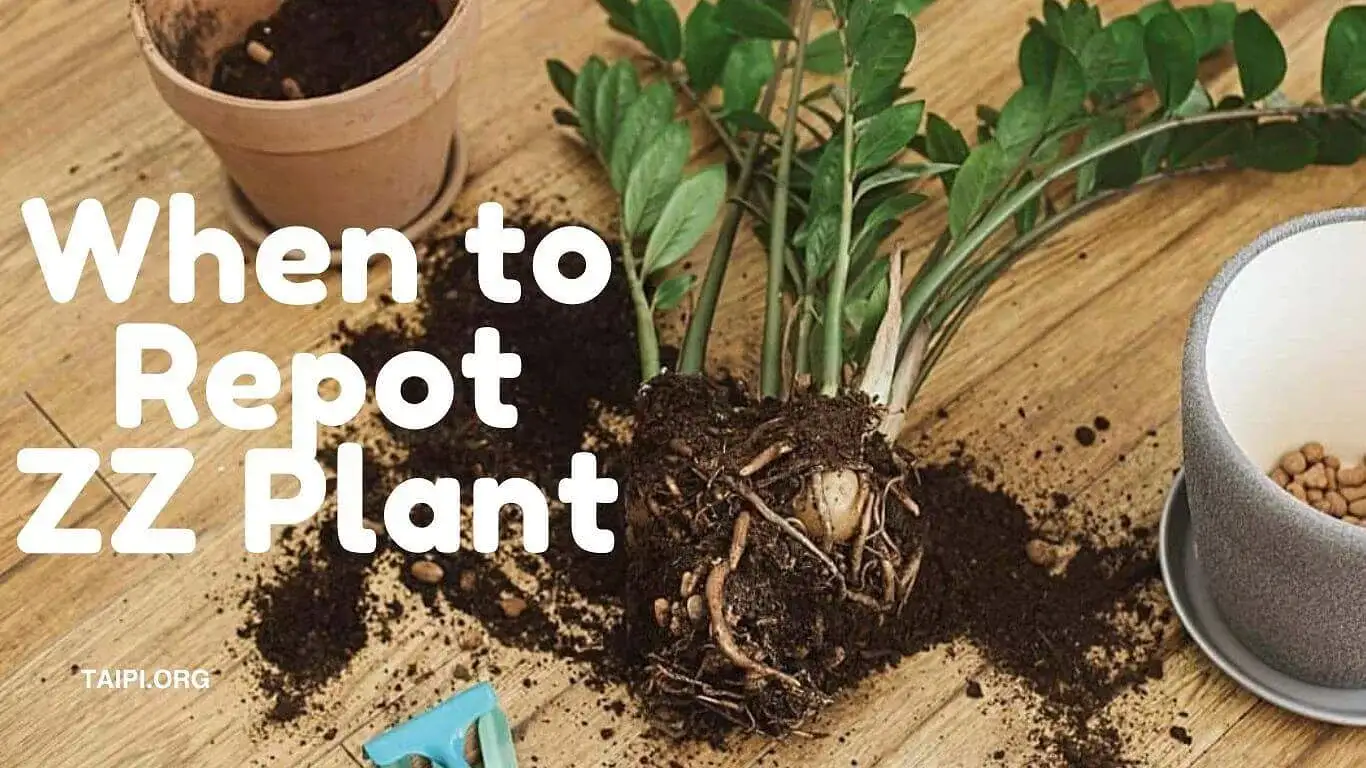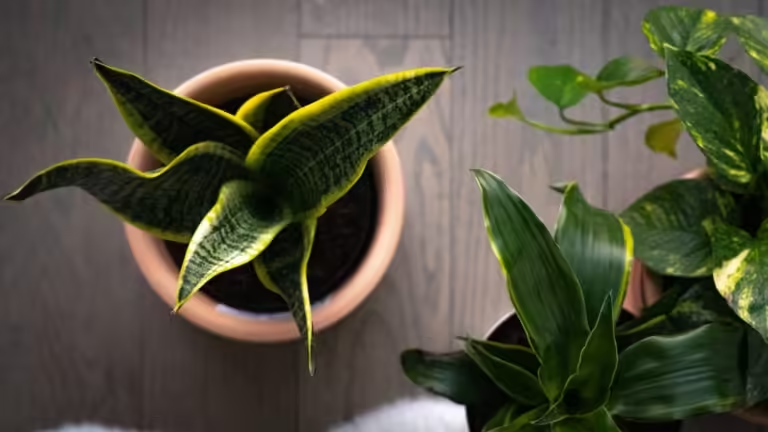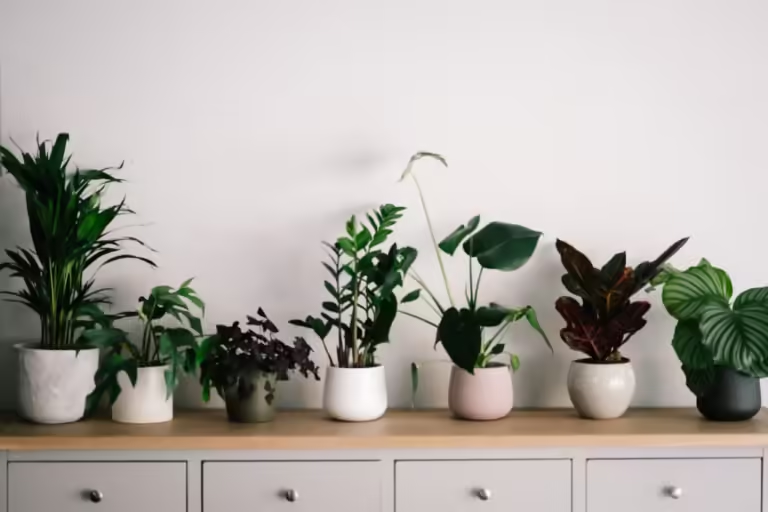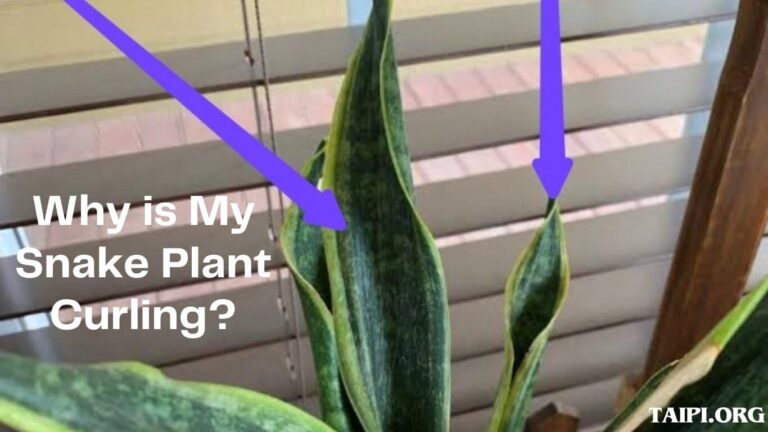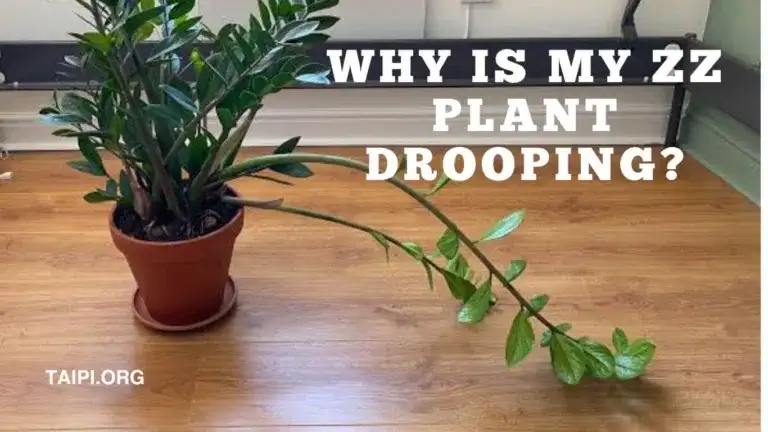When to Repot ZZ Plant
ARE you wondering when to repot ZZ plant? ZZ plants typically need to be repotted every 1-2 years or when they outgrow their current container. Repotting is best done in spring or early summer when the plant is actively growing. Keep an eye out for signs such as roots emerging from drainage holes or the plant becoming too top-heavy, indicating that it’s time for repotting.
Related: What Does an Overwatered ZZ Plant Look Like?
Before we look at the various situations that warrant repotting of your ZZ plant, how about starting with knowing the signs to look for?
Indicators Your ZZ Plant Requires Repotting
Recognizing when your ZZ plant requires repotting involves observing various signs such as:
Unhealthy Appearance
A visibly wobbly and pale appearance might indicate that your ZZ plant has outgrown its current pot and needs more space for healthy growth.
Visible/Emerging Roots
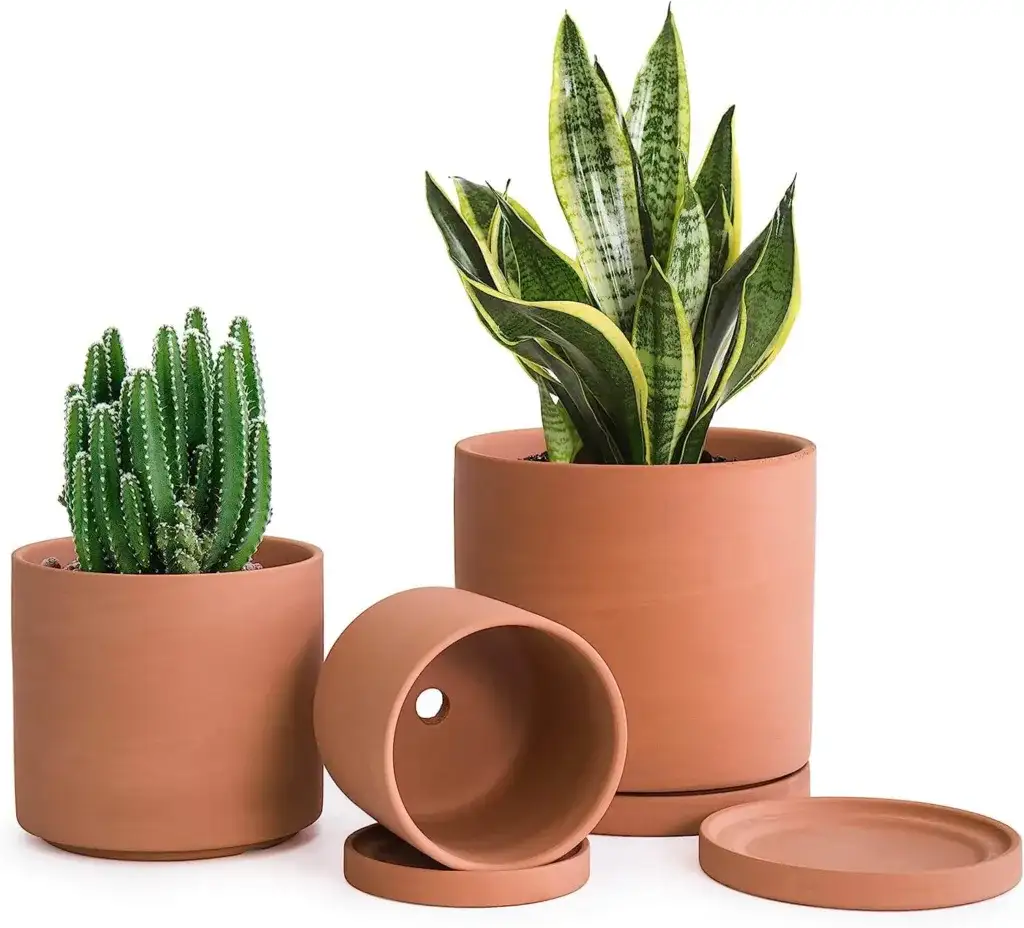
Check for roots protruding from the drainage holes (see picture ⬆) at the bottom of the pot. This indicates that the plant has become root-bound and needs a larger container to accommodate its growing root system.
Pot Cracks Due to Root Pressure
Strong roots can exert pressure on the pot, causing cracks to appear. If you notice cracks forming on the pot’s surface, it’s a clear sign that your ZZ plant requires repotting.
Depleted Soil Nutrients
Slowed or stunted growth may indicate that the soil no longer provides sufficient nutrients for your ZZ plant. Repotting allows for the replenishment of nutrients, promoting healthier foliage and growth.
Compacted Soil and Poor Drainage
Compacted soil prevents water from adequately reaching the plant’s roots, leading to poor drainage. If water runs through the pot without adequately watering the plant, it’s time to repot your ZZ plant into fresh, well-draining soil.
By paying attention to these signs, you can ensure that your ZZ plant remains healthy and thrives in its environment. Now back to our main question.
When is the Right Time to Repot Your ZZ Plant?
ZZ plants can thrive for years without needing frequent repotting. However, like any other houseplant, they eventually outgrow their pots and require a refresh.
Knowing when to repot your ZZ plant is crucial for maintaining its health and promoting growth.
Recognizing the signs that your ZZ plant needs repotting is the first step in providing it with the care it needs. Keep an eye out for the following indicators:
1. Root Boundness
As mentioned earlier, check for roots emerging from the drainage holes at the bottom of the pot.
If roots are circling the pot’s inner walls or densely packed in the soil, it’s time to repot.
2. Overcrowding
ZZ plants may become overcrowded, leading to stunted growth and reduced vitality.
If the plant appears too large for its current container or feels top-heavy, repotting is necessary.
3. Depleted Soil Nutrients
Over time, the nutrients in the potting soil can become depleted, hindering the plant’s growth.
Repotting allows for the replenishment of nutrients and ensures the plant has access to fresh soil.
Best Time for Repotting
Apart from those indicators, timing is crucial when it comes to repotting your ZZ plant to minimize stress and maximize success.
Spring to Early Summer
The ideal time to repot ZZ plants is during their active growth period, which typically occurs in spring or early summer.
Warmer temperatures and longer daylight hours promote rapid root establishment and minimize transplant shock.
Avoid Repotting in Winter
Refrain from repotting during the winter months when ZZ plants enter a period of dormancy.
Transplanting during this time can disrupt the plant’s natural growth cycle and increase the risk of stress-related issues.
Step-by-Step Guide on How to Repot Your ZZ Plant
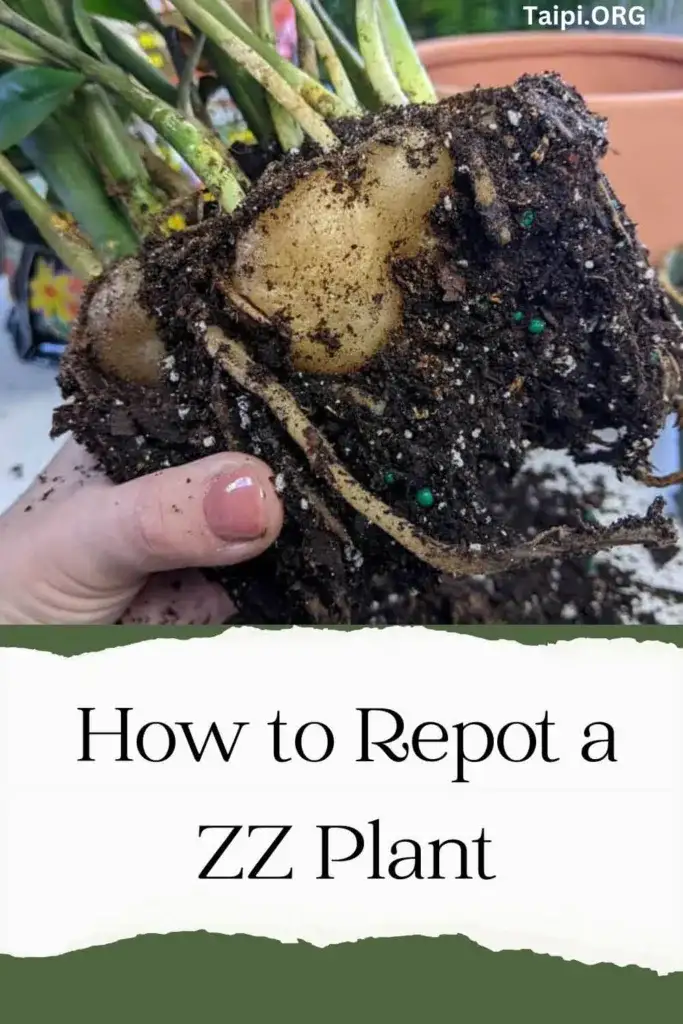
Follow these simple steps to ensure a smooth repotting process for your ZZ plant:
1. Choose the Right Pot
Select a pot that is 1-2 inches larger in diameter than the current one.
Ensure the new pot has adequate drainage holes to prevent waterlogging.
2. Prepare the Potting Mix
Use a well-draining potting mix designed for indoor plants or succulents.
Consider adding perlite or coarse sand to improve drainage and aeration.
3. Gently Remove the Plant
Carefully tip the ZZ plant out of its current pot, supporting the base of the plant to avoid damaging the stems or roots.
Loosen the root ball to encourage outward growth and stimulate new root development.
4. Repot the Plant
Place a layer of fresh potting mix at the bottom of the new pot.
Position the ZZ plant in the center and fill the remaining space with soil, gently firming it around the roots.
5. Water and Care
Thoroughly water the repotted ZZ plant until excess moisture drains from the bottom of the pot.
Allow the plant to adjust to its new environment, avoiding direct sunlight and overwatering in the initial weeks.
To this end, I am certain you will love to read these posts as well:
- Why is My ZZ Plant Leaning?
- Why is My ZZ Plant Drooping?
- How Often Do ZZ Plants Grow New Shoots?
- How to Identify an Underwatered ZZ Plant
When to Repot ZZ Plant FAQs
Q: How often should I repot my ZZ plant?
A: ZZ plants typically require repotting every 1-2 years, depending on their growth rate and the size of the container. Signs such as roots emerging from drainage holes or the plant becoming top-heavy indicate that it’s time for repotting.
Q: Can I repot my ZZ plant during the winter months?
A: It’s best to avoid repotting ZZ plants during the winter, as they enter a period of dormancy. Transplanting during this time can disrupt their natural growth cycle and increase the risk of stress-related issues. Aim to repot your ZZ plant during spring or early summer when it’s actively growing.
Q: How do I know if my ZZ plant is root-bound and needs repotting?
A: Look for signs such as roots circling the pot’s inner walls, emerging from drainage holes, or densely packed soil. If the plant appears too large for its current container or exhibits stunted growth, it may be root-bound and in need of repotting. Assessing the root system during routine maintenance can help determine if repotting is necessary.
My Closing Thoughts on When to Repot ZZ Plant
Repotting your ZZ plant at the right time and with proper care is essential for maintaining its health and vitality. By recognizing the signs of root boundness, choosing the optimal time for repotting, and following best practices during the process, you can ensure your ZZ plant continues to thrive for years to come.

